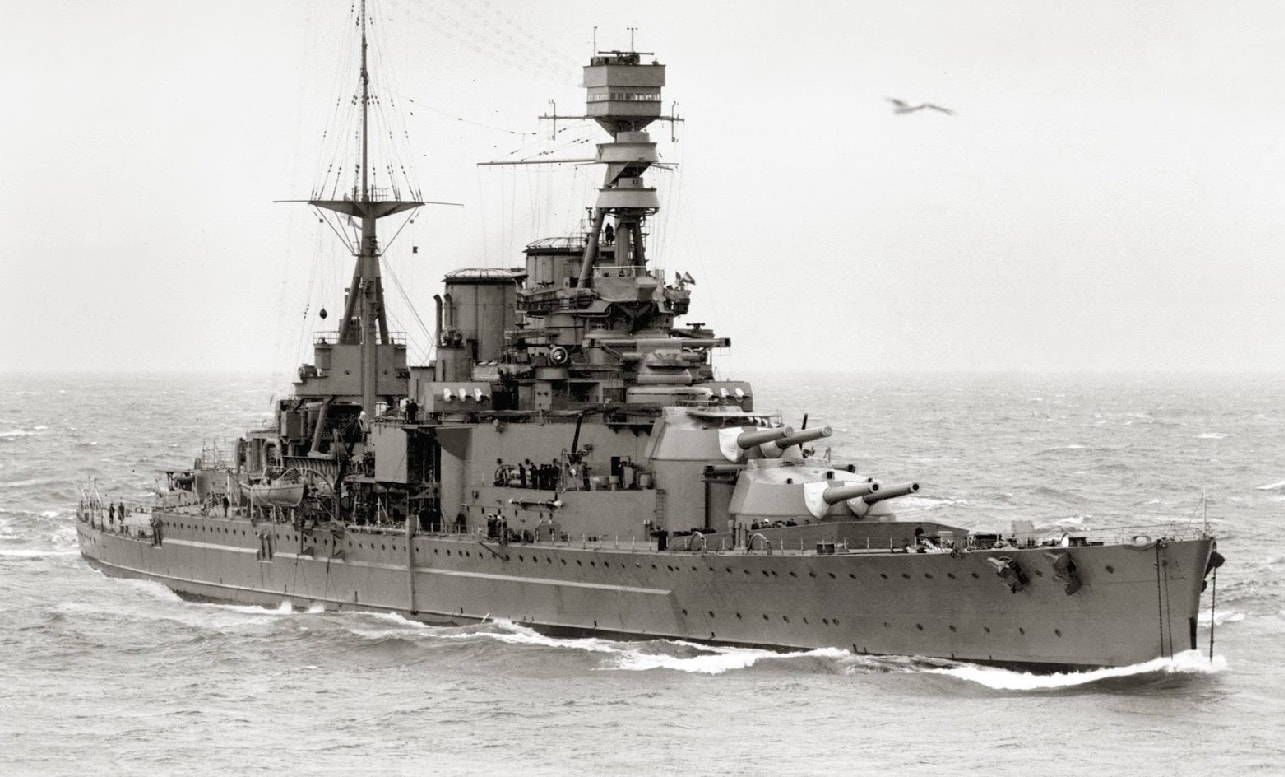Three days after the attack on Pearl Harbor, on December 10, 1941 the battleship era truly ended. All eight of the U.S. Navy’s battleships at Pearl Harbor were damaged, four were sunk and two never returned to action, but it was off the coast of British Malaya on that faithful day that the 35,000-ton King George V-class battleship HMS Prince of Wales was sunk along with the battlecruiser HMS Repulse.
The Royal Navy had sent the warship to the Far East as a show of force to stand up to Japanese aggression, and just two days after attacking British possessions, which put the two nations at war, the Japanese scored a devastating blow. HMS Prince of Wales was sunk, and hadn’t even been in service for a year.
Built at Birkenhead, England, and only completed in March 1941, she was rushed into action in late May to help hunt down and subsequently sink the German battleship Bismarck. She had received significant damage, but following repairs, the battleship carried Prime Minister Winston Churchill across the Atlantic to Newfoundland. From August 9 to 12, Churchill was joined by U.S. Franklin D. Roosevelt for the Atlantic Charter conference, the first meeting between the two English-speaking leaders in what was emerging as the “Great Alliance” against Germany and Japan.
HMS Prince of Wales was then deployed to the Mediterranean, and successfully engaged Italian warplanes off British-held Malta in late September. That may have convinced military leaders that a battleship could hold its own and fend off military aircraft – but it was not to be. As part of Force Z, Prince of Wales and Repulse were sent to Singapore to counter the swiftly developing Japanese threat in the region.
She arrived on December 2, 1941. Six days later the Japanese launched their invasion of British held Malaya and HMS Prince of Wales, HMS Repulse, three Royal Navy destroyers HMS Electra, HMS Express and HMS Tenedos and the Royal Australia Navy destroyer HMAS Vampire were sent to attack the invasion force. Their target was the Japanese. It was a critical error in judgment as the Royal Navy flotilla lacked air cover.
At 11am local time, eight Type 96 “Nell” bombers closed on the warships. While Repulse had avoided seven torpedoes as well as bombs dropped by six other bombers, a torpedo struck Prince of Wales on the port side aft. Lacking effective damage control, she soon took on a heavy list and less than two and a half hours later, she capsized and sank. Among the 327 Royal Navy sailors killed was Admiral Sir Tom Spencer Vaughan Phillips, KCB, commander of Force Z. He was one of the highest ranking Allied officers to be killed in combat during the war.
Prince of Wales and Repulse also became the first capital ships to be sunk solely by naval air power while at sea. The age of the battleship had come to an end.
“In all the war, I never received a more direct shock,” Prime minister Sir Winston Churchill recalled in his post-war memoirs. “As I turned over and twisted in bed the full horror of the news sank in upon me. There were no British or American ships in the Indian Ocean or the Pacific except the American survivors of Pearl Harbour, who were hastening back to California. Across this vast expanse of waters, Japan was supreme, and we everywhere were weak and naked.”
The tide would turn for the Allies. In fact, HMS Prince of Wales also has the notable distinction of being the last Allied battleship sunk in combat. By the end of the war, nearly the entire Japanese fleet would meet a similar and terrible fate – with Allied aircraft claiming many of the victories against the Imperial Japanese Navy’s battleships and aircraft carriers.
Peter Suciu is a Michigan-based writer who has contributed to more than four dozen magazines, newspapers, and websites. He regularly writes about military small arms, and is the author of several books on military headgear including A Gallery of Military Headdress, which is available on Amazon.com.

